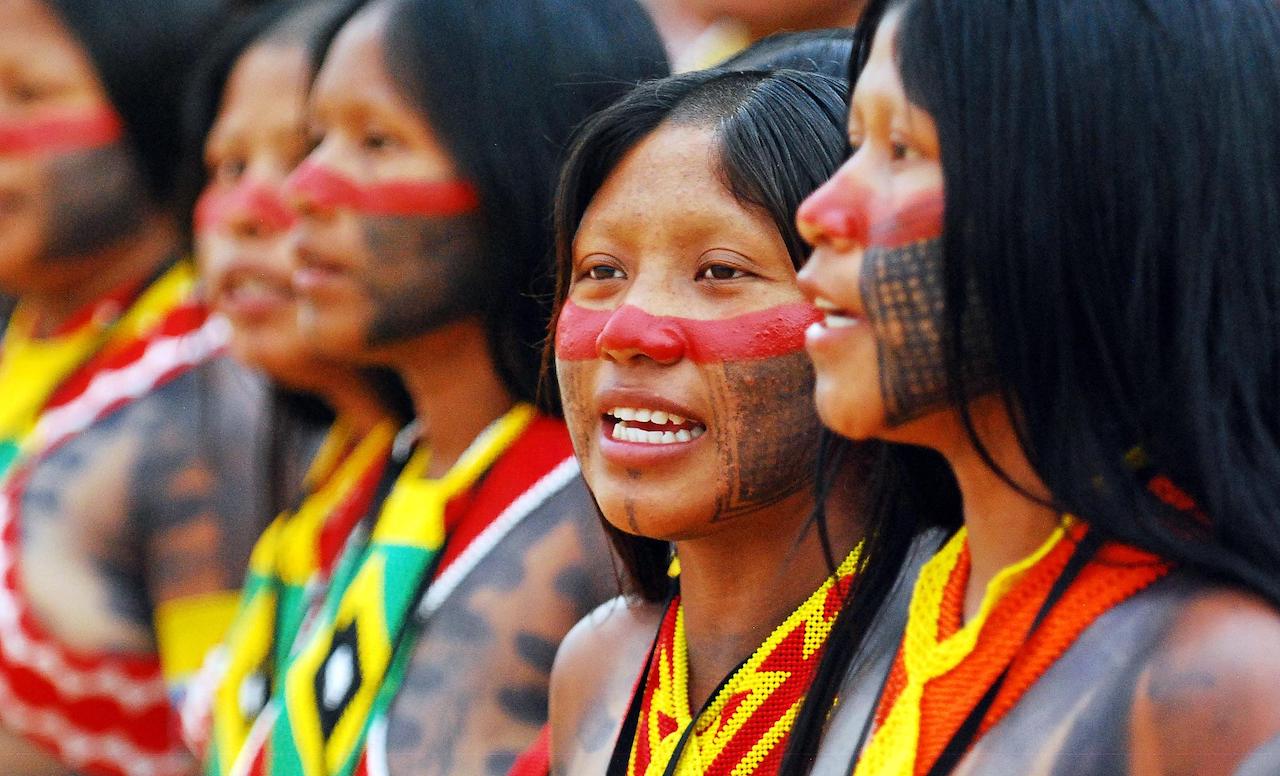What Will a Kayapo Crown in Heaven Look Like? Visit the Brazilian Amazon
Much emphasis recently in Canada and the United States has focused on indigenous people groups. In Ottawa, Canada, the nation’s parliament has declared past actions towards Canada’s original peoples a genocide. Consistent efforts are being made to bring about reconciliation. Pope Francis undertook a trip across Canada a year ago. He concerted efforts to bridge the gap between Canada’s aboriginal peoples and the Vatican. Justice and reconciliation are now significant societal issues.
In Brazil, indigenous people flourished before the arrival of the Portuguese. FUNAI, the governmental protection agency for Amerindian interests and their cultures, estimates the presence of more than 2,000 aboriginal tribes and nations. This preceded European contact, and an estimated two to three million subsisted on hunting, fishing, gathering, and migrant agriculture. In the next 500 years, most tribes suffered extinction, so today, only about 200 tribal groups come under the control of FUNAI. About 50 groups are still listed as having had no contact with contemporary civilization.
One of the larger groups is the Kayapo. This indigenous group occupies a vast area of the Amazonian Forest in the Brazilian states of Pará and Mato Grosso. This enormous area includes two priceless treasures: gold and the promise of electricity from hydroelectric dams.
Starting about 1985 and until 1990, the arrival of prospectors looking for gold was a trickle. However, word spread quickly, and soon gold prospectors were involved in increasingly violent conflicts over land use. Similarly, controversy broke out when it became evident that 20,000 indigenous people would be negatively impacted after the Xingu River’s newly constructed Belo Monte Dam. The world’s fifth-largest hydroelectric facility began producing energy in 2019.
With gold mining polluting the river systems, the negative impacts began to be widely felt. Kayapo men started drinking alcohol, and socially spread diseases continued infecting indigenous people living far away from hospitals and clinics. Deforestation erodes their sense of well-being and identity. Dione, whom you have met on these pages before, reaches out to many people, especially the women. Many of them love the Scriptures now.
The Kayapo traditionally depend upon the forest for their food and medicines. A Kayapo man, trained by his elders, knows 250 different food plants in the woods and which plants not to eat because they are poisonous. The women have names for 650 other medicinal plants they can locate within walking distance of their village.
Furthermore, they know how to save the land from over-farming. Using the slash-and-burn methods, they clear new farmland, rotating crops such as sweet potatoes for four to five years, yams and taro for five to six years, and manioc for four to six years. Older fields become a treasure store; a concentration of medicinal plants accumulates there.
FUNAI says their total population in 2018 was 8,638 individuals. LAM considers it important to focus on groups such as the Kayapo; they are as important as other groups of people, even if we know little about them. https://en.wikipedia.org/wiki/Kayapo#
In their language, a few understand Revelation 7:10-17. They have come out of the great tribulation, washing their robes and making them white in the blood of the Lamb. They cried loudly: ‘Salvation belongs to our God who sits on the throne and to the Lamb.’ They are before the throne of God and serve him day and night in his temple, and he who sits on the throne will spread his tent over them. Never again will they hunger; never again will they thirst. The sun will not beat upon them nor any scorching heat. For the Lamb at the center of the throne will be their shepherd; he will lead them to springs of living water. And God will wipe away every tear from their eyes.”
When a Kayapo man or woman hears about casting down their crowns, these images come to their mind. Now, aren’t you glad you know what some crowns in heaven will look like!?



